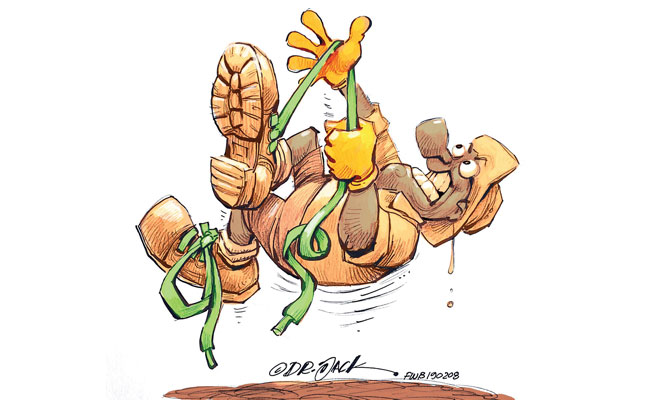
Much of the attention devoted to common property resources has centred on the environmental question.
Can land, sea, estuaries and rivers, which belong to no single user, survive the ‘tragedy of the commons’? Will their utility be negated by ‘free riders’, those individuals who maximise their own benefit at the cost of the general good?
In South Africa, a range of local black and coloured groups have used municipal commonage since 1994, and their profile reveals increasing economic stratification.
This emerging class of proto-commercial commonage farmer is increasingly prevalent and a widespread social phenomenon in rural towns. T
hese farmers have benefitted from subsidised municipal land rentals, but they have also experienced many years of frustration with municipal mismanagement, social conflict, and cramped and overgrazed land. Some have also benefitted from state-acquired commonage land or redistribution farms, while others are still waiting their turn to ‘step off’ the commonage.
But despite challenging local circumstances, many reveal economic energies that are being directed in commercially astute directions; they are self-made men and women, pulling themselves up by their bootstraps.
Hard-working entrepreneurs
The quiet revolution in commonage land use started in 1994 when, for the first time, black and coloured residents in small and medium-sized towns had an opportunity to access land and keep livestock.
The phenomenon has hallmarks of the productive Russian ‘kulak’ class that emerged from the downtrodden peasantry in the early 20th century. What distinguished them from other peasants was their entrepreneurial attitude: they were hard-working, risk-taking and economically productive.
On the eve of the First World War, the kulaks were producing more marketable surplus grain than any other social group. When Stalin eliminated them during the 1930s, Russia starved.
After 1991, a major transition took place: the post-Soviet Russian state set about creating a stratum of private farms. Once again, a group of enterprising, small-scale farmers has emerged.
In South Africa, the emergence of a cohort of black and coloured agrarian entrepreneurs may well improve the economic prospects of rural towns.
Despite key differences between modern rural Russia and South Africa, there are similarities: the new commonage users have utilised state land to begin the long and arduous process of building a private capital base. Enterprising commonage farmers could use this land as a stepping stone to accumulate more livestock, capital and experience.
The emergence of these small commercial farmers may constitute a new economic agrarian class that can contribute to the land debate. In fact, land reform could benefit from the energy and enthusiasm of commonage farmers.
Municipal commonages came into being during the 1800s as part of the process of town establishment and were originally used by white townsfolk to keep livestock, mainly for household food production.
By the 1950s, most white residents had outgrown this pastoral system of livelihood support. Increasingly, the land was let to commercial white farmers, who paid market-related rentals to the municipal landowners. This provided a valuable financial revenue stream to municipalities.
After 1994, when the contracts with white farmers began to expire, local municipalities made commonage camps available for urban residents, who, almost invariably, had never before enjoyed access to agricultural land.
Now, in 2019, almost all municipal commonage land that is in use is utilised by black or coloured farmers.
Unfortunately, government policies have never really engaged with the concept of commonage land as a new institutional form. Municipalities’ role has been limited to supervising infrastructure maintenance and collecting rentals.
Another factor contributing to the institutional weakness of municipalities in commonage management was that, after 1994, neither land reform nor agriculture was regarded as a municipal function in terms of the South African Constitution.
Consequently, central government did little to orient municipalities to managing commonage land effectively, and commonage has become a land reform ‘Cinderella’.
The new commonage farmers are trapped between several conflicting dynamics: dysfunctional municipalities, limited land resources, poor municipal land management, their inability to access loans (because of a lack of collateral), and unresolved social competition for space.
Succeeding despite the odds
Despite all these difficulties, many local residents have acquired some livestock and now cling tenaciously to their toe-hold in the agriculture sector. Echoing the experience of similar emergent entrepreneurial agriculturalists in modern Russia, a significant number of commonage farmers have developed new resources, new values and new levels of confidence in their own agricultural abilities.
It is heartening to uncover a ‘class’ of producers who have shown such tenacity in building up their enterprises and being so committed to them.
Their accumulation of livestock and other assets, their desire to escape the constraints of collective farming, and their hunger for additional farmland are admirable and reflect their growing ambition.
The slow but steady evolution of a class of kulak farmers in South Africa shows that farmer development can take place in tandem with land redistribution.
Commonage land is a useful learning site, where farmers can spend a few years deciding on their future economic trajectory. When the state provides land for ambitious commonage farmers to ‘step off’ the commonage, the likelihood of launching successful commercial agriculturalists is enhanced.
This approach to land reform deserves a much higher profile in land policy debates. – Roelof Bezuidenhout
The views expressed in our weekly opinion piece do not necessarily reflect those of Farmer’s Weekly.
Source: Atkinson, D. & Ingle, M. 2018. ‘By their own bootstraps: municipal commonage farmers as an emerging agrarian class in the Karoo’. African Journal of Range & Forage Science (Karoo Special Edition).
For more information, email the corresponding author at [email protected].










